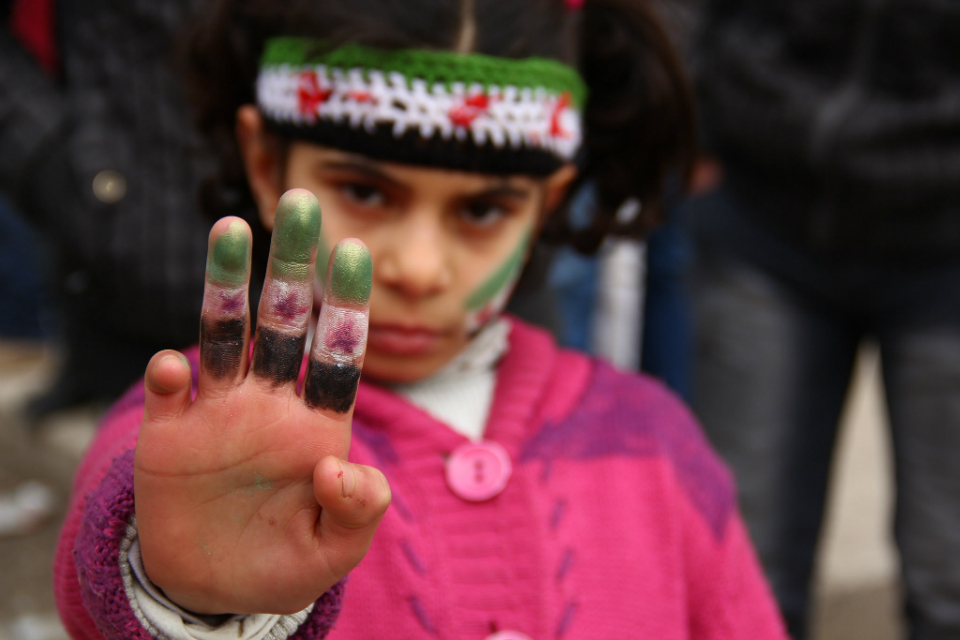How Syria can escape Asad’s reign of terror
For anyone who has visited Aleppo in peacetime, the news from the city today is enough to make you weep.

(This article first appeared in the Times).
We are seeing indiscriminate attacks on civilians; the bombing of medical facilities; children pulled bloodied from the rubble.
We are forced to watch one of the most ancient homes of civilisation being literally pulverised, the lives of innocent families shattered by every kind of munition from barrel bombs to chlorine gas.
The agony of Aleppo is only the latest instalment of a conflict that has now lasted for almost as long as the Second World War. The Syrian war has cost the lives – according to the UN – of as many as 400,000 people.
The fighting has displaced half the population, and caused so many to flee the country that the knock-on migration crisis has affected the whole of Europe, with political reverberations that are still being felt. There is one man who bears overwhelming responsibility for this disaster; a man whose barbaric military tactics have caused the vast majority of those 400,000 deaths.
That leader is Bashar al-Asad. It is his killing machine, his barrel-bombs, and – in the end - his fight for personal political survival.
It is no mere piety that leads us to call for him to leave power. It is a simple and practical observation that he can have no part in the future government of a new Syria – because as long as Asad is in power in Damascus, there will be no Syria to govern.
There is no way that the opposition forces, moderate or otherwise, will end their struggle, as they fear that by laying down their weapons they could leave Asad in charge. Asad is the single most effective recruiting sergeant for the Sunni militias of every kind. It is Asad who has stoked and exploited the hideous death cult of Daesh.
That is why the entire international community is committed – at least in principle – to getting rid of the Syrian dictator. Even the Russians have accepted there must be political transition. But then the Russians are also employing their military muscle to prevent him from losing, to keep him in power.
And when the Russians are asked to explain this seemingly indefensible conduct they reply with one stubborn question: the question with which we began. What then? What follows Asad?
It is a question whose potency derives from the Iraq war, and the total failure of the west to prepare for the consequences of removing Saddam. We unseated a Baathist strongman, and chaos ensued.
Why should the same not happen again? There are two answers. The first is that Asad is not a strongman, but a frighteningly weak leader who can never again hold his country together – not after the slaughter he has engaged in. The Syrian people will surely not feel safe as long as he is in command of the army, or able to send planes above their streets.
The second is that this time there is an alternative. Today in London we are hosting the Syrian High Negotiations Committee, the broadest based opposition grouping in Syria. They will set out their vision for a post-Asad Syria that is democratic, and pluralistic – but which also makes the commonsensical assumption that you cannot just sweep away all the existing structures of the state. That was (one of) the mistakes in Iraq, and it will not be repeated.
There are people meeting in London today who have direct experience of running Syria, but who utterly reject the Asad-style police state. They want to create a new country, in which there are checks and balances in government, and in which the rights of women and minorities are respected.
Their ambition is to ensure a safe space, free from terror, to which migrants can return. Above all, the High Negotiations Committee does not represent the victory of one sectarian group over another, or the transfer of power from one faction in Syria to another.
They propose a gradual transition. First, there is to be a 6-month negotiating phase between the regime and the opposition, accompanied by a total ceasefire and full humanitarian access across the country.
Next there is to be an 18 month period in which Syria is to be governed by a transitional body; and this body, crucially, would be a mixture of opposition figures, representatives of the current government, and of civil society.
Asad would by then be gone. There would then be elections. The new government could focus on clearing Daesh from its diminished strongholds around Raqqa.
There is still a chance that this vision can be made to work. If the Russians and Americans can together create a ceasefire, then the talks can restart in Geneva – with the difference, perhaps, that all sides will by then have seen at least the scaffolding of a post-Asad Syria.
There are many millions of Syrians still living in the country – to say nothing of the 4.8m who have fled – who are yearning for nothing but an end to the violence. This is a chance to show them how that might be achieved: with the first credible picture of Syria without Asad.